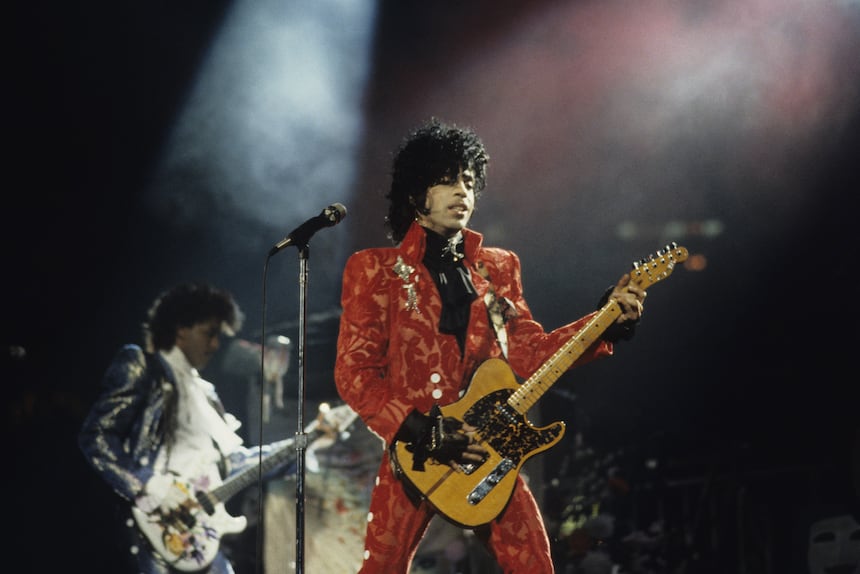As the ‘90s opened, Prince was in a weird place. Coming off the rollercoaster of Lovesexy’s tepid commercial reception, the windfall success of the tossed-off Batman soundtrack, and the bombing of the deeply personal Graffiti Bridge movie and soundtrack album, Prince had a choice to make about his direction moving forward. Would he be a creative madman indulging his singular musical whims for a small but devoted fanbase? Or would he use his prodigious talents to align himself with the pop zeitgeist in order to become relevant again? Well, the man realized he had bills to pay, and work began on Graffiti Bridge’s follow-up in late 1989, with Prince’s eye firmly on the mainstream. Taking more than two years to complete, Diamonds and Pearls was, with the exception of Purple Rain, the album that Prince exerted the most time and effort on, relying completely on brand-new material (rather than pulling songs from the vault) and the integration of a brand-new band, the New Power Generation. That band is the secret weapon for the success of Diamonds and Pearls, harnessing two formidable forces of nature—vocalist Rosie Gaines and the rhythm section of Michael Bland and Sonny Thompson—that give this music a breadth, depth, and muscularity that had only been hinted at on previous Prince albums. Even on numbers like “Push” and “Daddy Pop” that have their eye on mainstream R&B audiences, Prince largely eschews the airless drum-machines-and-synths sound of his ‘80s recordings for a full-bodied, live-band sound that was somewhat at odds with the contemporaneous hits that were full of ... drum machines and synths.
To be sure, hip-hop was a massive influence on the album—the first configuration of Diamonds and Pearls from late 1990 opened with “Something Funky (This House Comes),” which featured no Prince vocals, but, instead, raps by Tony M. Its incorporation is often clumsy (see: “Jughead”), but occasionally charming (Prince’s demur “you don’t want me on the mic” bit on “Push”). Yet for all the nods to the charts, like the note-perfect balladry of the title track or the T. Rex-ripping “Cream,” there was still quite a bit of “weird Prince” making its way through the grooves on Diamonds and Pearls, from the religio-rocking bombast of “Thunder” that updated “Let’s Go Crazy” for the ‘90s and the album-closing rock opera “Live 4 Love,” to the unhinged lasciviousness of “Gett Off.” For this massively-expanded Super Deluxe Edition, one can get a look at just how hard Prince was working during this time, as the selection of outtakes and non-album tracks is extensive. Though most of the b-sides of the era were glorified remixes, some, like “Horny Pony” were part of the album project from its earliest phases (it’s also included in a previously unheard alternate version). A couple of other tracks that made their way to various configurations of the album are here also—“Schoolyard,” “Something Funky”—and it’s easy to see why they didn’t make the final cut. However, Prince’s compositional powers were still in full flow, and, like during the Purple Rain period, many of the best non-album tracks he would write would end up finding their way to other artists; this set features several highlights, from three stellar synth-pop tracks written for Martika and the killer midtempo jam “Get Blue” (given to Louie Louie) to the bouncy, funky “The Voice” that found its way to Mavis Staples’ second Paisley Park Records album.

There are several other worthwhile outtakes, including “Darkside,” which is the New Power Trio at their gnarliest, running through a gut-punching instrumental jam featuring Prince utterly slaying on his guitar while Bland and Thompson provide a “big time loud” backing. “Lauriann” sounds like a prime, early ‘80s outtake, while the playful “Glam Slam ‘91″ is an embryonic version of “Gett Off” that has little to do with the Lovesexy track of the same name. There are quite a few outtakes that could have been best left in the vault: “Streetwalker” features Prince breathlessly intoning “work it baby” in a way that’s just embarrassing; the explicitness of “Schoolyard” was cringey in the ‘90s and is downright problematic today; similarly, the fat jokes on “Work That Fat” have absolutely not aged well, but the song is still home to one of Prince’s funkiest grooves. The inclusion of a barn-storming club show from 1992 more than makes up for any suboptimal outtakes, though, as the band and Prince are absolutely on fire throughout, serving as an excellent reminder that, while Prince may have been willing to give hip-hop the time of day, he was still able to deliver a live show at a level few performers could ever match.



